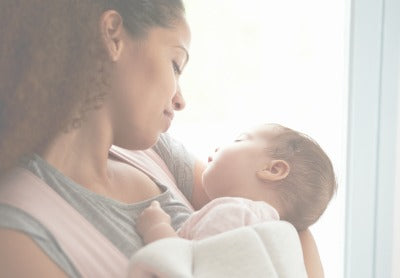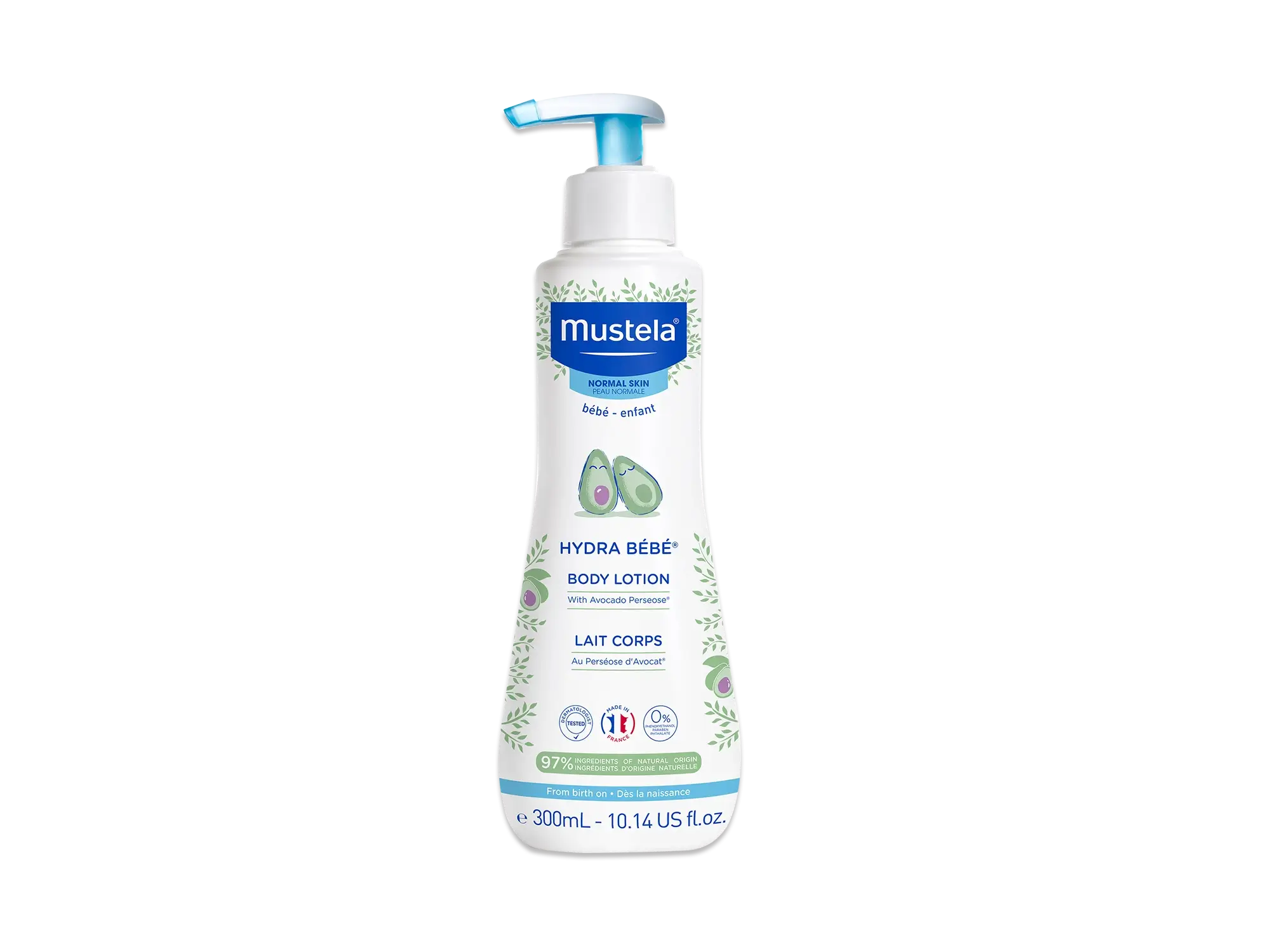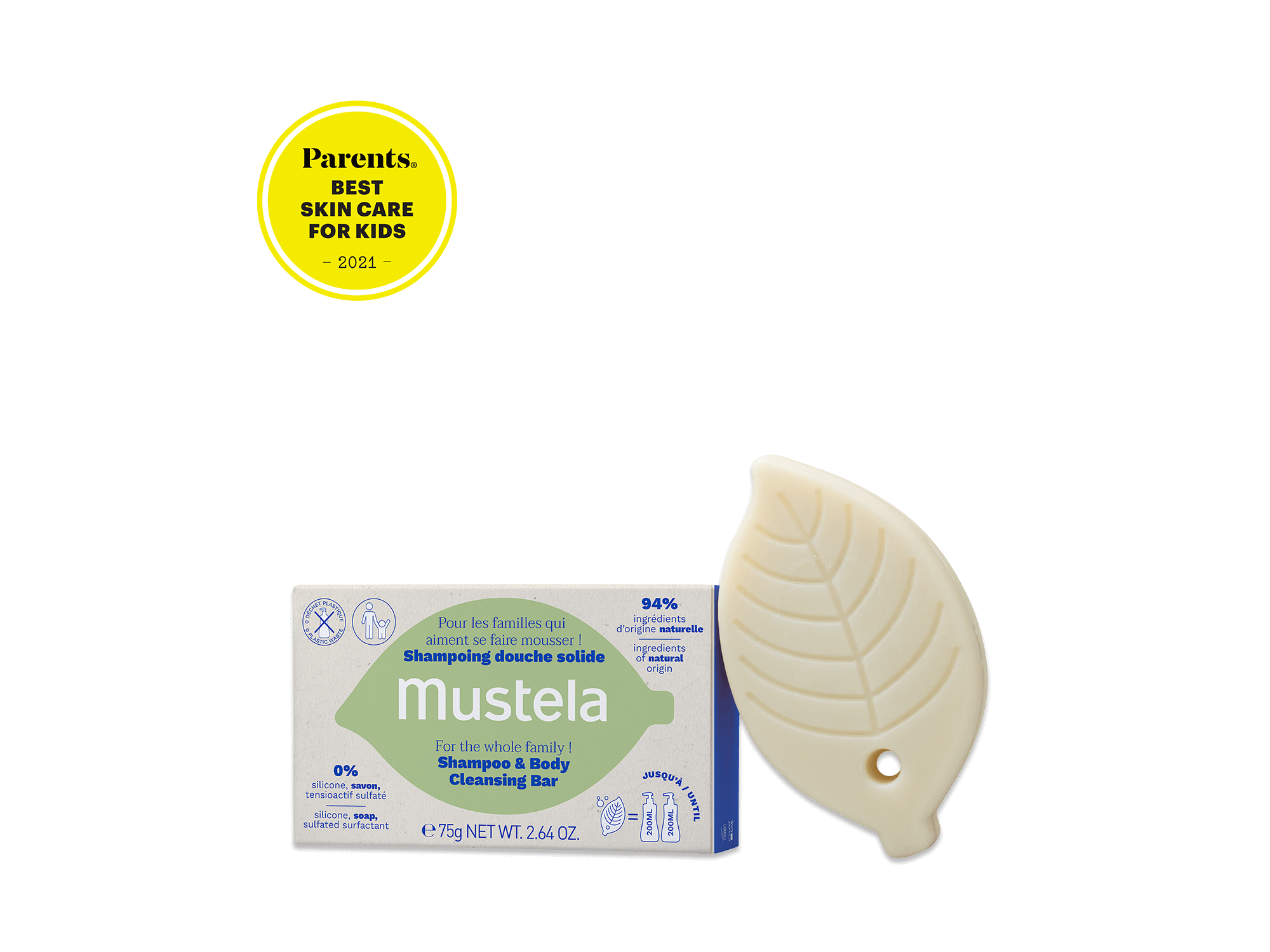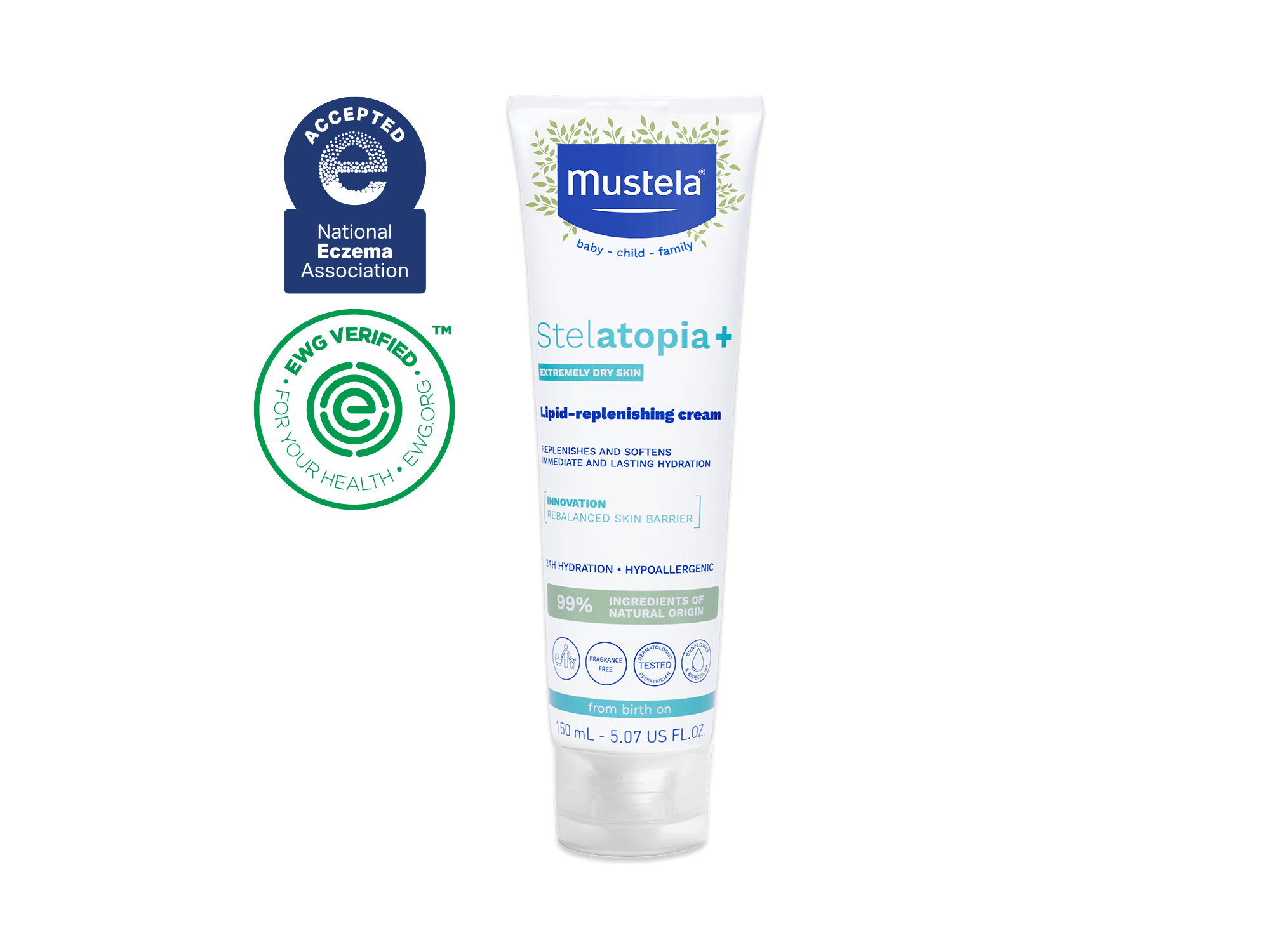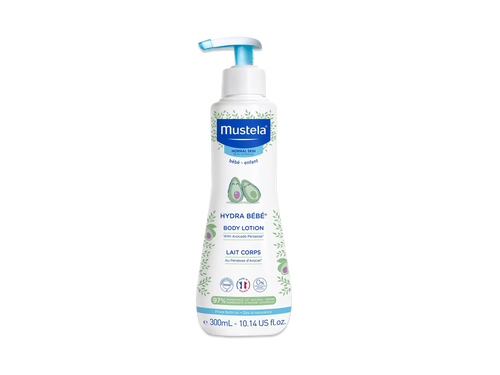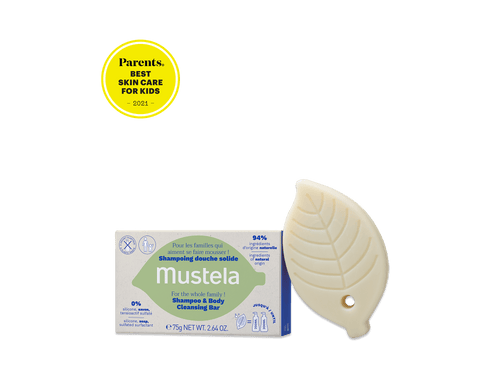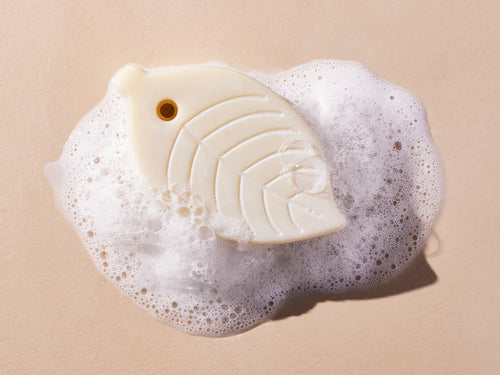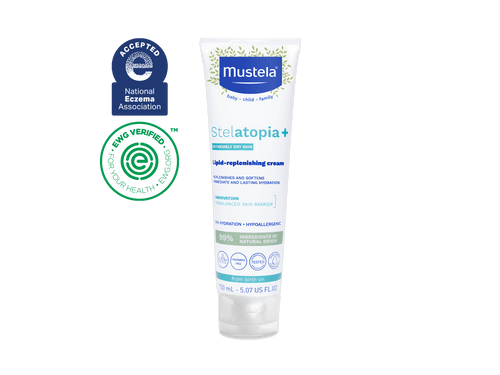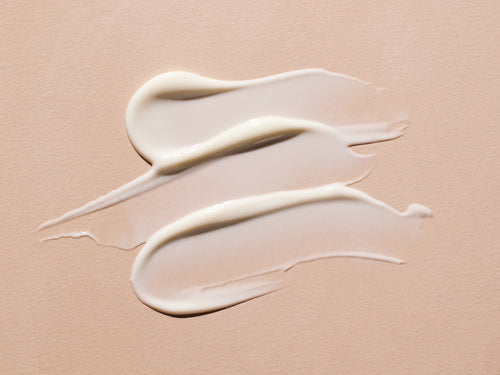One of the most common ailments that newborns face is congestion. If you have a congested baby on your hands, you’re probably concerned and looking for ways to help your little one breathe better. You’re in luck! This post from the baby experts at Mustela will tell you just that.
We’ll start by explaining symptoms to watch for as well as what might be causing your baby’s congestion. Then we’ll show you 13 easy ways to help your congested baby breathe easy.
Two Types Of Congestion And Their Symptoms
It’s important to identify which type of congestion is bothering your baby so you know how to correctly care for them. The two types of congestion that are most likely to affect your baby are nasal congestion and chest congestion.
And regardless of which type it is, congestion can be alarming, especially if this is your baby’s first time coming down with something.
Nasal Congestion
Nasal congestion is the most common of the two. With nasal congestion, your baby will have a runny or stuffy nose. This can make it hard for your baby to eat, but they will still show interest in feedings.
Nasal congestion isn’t necessarily a serious concern. The culprit could be a common cold, not an actual infection.
If your baby is still their happy little self — smiling, cooing, eating, and sleeping normally — then the problem is most likely just nasal congestion.
Some other nasal congestion symptoms you may notice in your baby include:
- Noisy breathing
- Possible snoring when asleep
- Coughing
- Sniffling
Chest Congestion
If your baby’s congestion is in their chest, it means there is fluid in their lungs or airways. This type of congestion can be scary, but take a deep breath because this is the least common of the two, especially in young babies.
Look for these chest congestion symptoms in your baby:
- Rapid breathing
- Wheezing
- Coughing
- Lack of interest in eating
What Causes Baby Congestion?

Babies face a number of different illnesses in their first year or two of life. From skin conditions like eczema and rashes to the common cold and other ordinary infections, infants have a tough time in the beginning as a result of their weak immune systems. A congested baby is nearly as common as a baby with clear sinuses.
So, what specifically makes a newborn especially susceptible to congestion? There are several good reasons why babies become congested so easily.
First of all, your baby spent their first nine months of existence submerged in amniotic fluid. After delivery, there may be residual amounts of fluid left in their sinuses, which can make your little one congested.
Second, your baby has teeny-tiny little airways, so breathing can be quite a chore. It’s perfectly normal for babies to sound like they’re having a hard time breathing on a regular basis.
Third, babies have not yet learned how to do things that adults would normally do to clear their sinuses—like blowing their noses or sniffling.
As if that’s not enough, babies catch viral and bacterial infections at a higher rate than older children and adults. This is because their immune systems are still developing and learning how to ward off illnesses. And on top of all that, newborns are far more sensitive to air irritants, like dust, pet dander, pollen, and smoke.
So there you have it! There are plenty of factors that could leave you with a congested baby. But let’s not spend any more time on what’s causing the problem. Instead, let’s focus on solutions.
13 Easy Ways To Help Your Congested Baby
While there are many different things that can make your baby congested, there are also several things you can do to clear their sinuses. Here are 13 easy ways to help your congested baby breathe and rest easy.
1) Keep Your Baby Hydrated
It’s always a good idea to ensure that your baby is adequately hydrated. This is especially crucial if your little one is congested.
Hydration is beneficial because the extra fluids can help flush out any excess mucus or other substances clogging your baby’s sinuses. Give your child plenty of breastmilk, formula, or both.
2) Remove Irritants From Your Baby’s Environment
As we mentioned earlier, your baby is extremely sensitive to air irritants like pollen, dirt, dust, and pet dander. An effective way to help your congested baby is to remove the obvious irritants from your baby’s environment.
Dust and sweep your home regularly. Leave windows closed when it’s windy and in the springtime when plants are blooming. If your little one seems extra sensitive, consider purchasing an air filter for your home.
Additionally, if you’re looking for a way to freshen up your home, choose products that are non-irritating. These can safely be used to freshen up and perfume your baby’s nursery (or any room!) and linens.
3) Let Your Baby Sit Upright
When your baby is sitting upright, the forces of gravity will help draw out some of the mucus that’s clogging their sinuses. As such, letting your little one sit upright will help clear up their congestion. It’s best to hold your baby in your arms or put them in a supportive device, like a carrier wrap or sling.
4) Give Your Congested Baby Saline Drops
Nothing helps a congested baby like good, old-fashioned saline drops. Just one or two drops per nostril will do the trick. The saline solution will help flush out any mucus that’s causing the congestion in your baby’s sinuses.
5) Run A Humidifier
Dry air can lead to congestion in both adults and infants. One excellent way to clear your congested baby up is to run a humidifier in your baby’s room or nursery. It’s especially helpful to use a humidifier while your little one is sleeping.
6) Use The Right Skin Care Products
All babies have sensitive, delicate skin. This means that you need to use gentle, safe skin care products like Mustela’s, to avoid irritating their nose or throat and causing congestion.
Whether your baby has normal skin, dry skin, very sensitive skin, or eczema-prone skin, we have the product to meet their changing skin care needs! After you discover your baby’s skin type, you can safely and correctly treat their skin with our gentle products.
Normal skin
Your baby’s skin continues to develop until their second birthday. This means it’s still delicate and requires extra hydration and protection even if it appears to be perfectly smooth.
From bath time to hydration to quick clean-ups, we have something for your baby’s normal skin! Start bath time with our Gentle Cleansing Gel. Our tear-free formula cleans your baby’s scalp without stripping it of its natural oils!
For an extra burst of freshness after bath time, try our Skin Freshener that gently refreshes and moisturizes your baby's skin in one soothing step. It’s the perfect addition to your baby skin care routine!
An added bonus of this product: It can also be used to style your baby's hair in-between baths and keeps your baby cool and comfortable during warmer months!
Dry Skin
If your baby has dry skin, you’ll notice rough and flaky patches. To meet your baby’s dry skin care needs, you’ll need products that will boost hydration in their skin. And our Nourishing Lotion With Cold Cream does just that!
It protects the surface of your baby's skin against environmental conditions while also reaching the deeper layers of the skin. Used daily, our lotion — made with ingredients of natural origin — will deliver immediate and long-lasting moisture to your baby’s dry skin!

Very Sensitive Skin
Redness is a telltale sign that your baby has sensitive skin. Our very sensitive skin line consists of products that are fragrance-free to help eliminate any skin irritants for your baby.
Your baby’s skin will get the right amount of moisture when you use our Sensitive Bath Time Set! This bundle safely and effectively cleans your baby's hair and body while working to soothe their skin.
Eczema-Prone Skin
Eczema, a common skin condition, can affect babies as young as two months old. Mustela’s Eczema-Prone skin care line is fragrance-free and designed to replenish and soothe your little one’s eczema-prone skin.
The rich texture in our Stelatopia Emollient Cream is perfect for daily care. It helps soothe your baby’s skin and makes it feel comfortable, something that’s hard to accomplish with eczema-prone skin!
We steer clear of questionable ingredients, such as parabens, phthalates, phenoxyethanol, ammonium lauryl sulfate, and alcohol just to name a few — which can all be catalysts for stuffy and runny noses!
7) Sit In A Steamy Bathroom With Your Baby
Run a hot shower and simply sit in the bathroom with your little one for a few minutes. The steam will help your congested baby breathe a bit easier.
Important note: only stay in a steamy bathroom for three to five minutes at a time. If it gets too hot or if your baby seems uncomfortable, it’s time to call the sauna session off.
8) Give Your Baby A Bath
Who doesn’t love a nice warm bath? Your congested baby will definitely love a nice warm bath. As the age-old parenting advice says, “If your baby is fussy, either put them in water or go outside”.
In this case, a warm bath can often soothe your baby if they’re bothered by their congestion. You can even transform bath time into a bonding experience with your little one with our bath time products.
Our Bath Time Essentials Set includes four essential plant-based skin care products to keep your baby clean and moisturized during and in-between bath time! On top of caring for your baby’s skin during their bath, stimulate your baby’s senses!
Your baby will get excited when they see, feel, and play with our Multi-Sensory Bubble Bath! It makes bath time fun and therapeutic for both you and your baby while also protecting and hydrating your baby’s skin! Then wrap up bath time with our Hydra Bebe Body Lotion.
Gently massage the lotion onto your baby’s skin. Our non-greasy formula leaves your baby’s skin silky-smooth. Your baby will be relaxed after getting out of the bath and massaged with our lotion, which will help ease their congestion symptoms.
9) Clear Mucus Away With A Nasal Aspirator
A nasal aspirator is a small device that looks like a drop applicator but is designed to draw things in rather than push them out. Nasal aspirators are a great way to help get rid of your congested baby’s excess mucus.
Simply press the air out of the aspirator, place it just inside of your baby’s nostril, and release the bulb to suck mucus out of your little one’s sinuses.
10) Give Your Baby A Gentle Nasal Massage
A gentle nasal massage can help loosen and remove any substances clogging your little one’s sinuses. Simply use two fingers to gently rub the area around the top of your baby’s nose.
This can also include the region just under your little one’s eyebrows. Monitor your baby closely to make sure they’re not experiencing any discomfort.
11) Pat Your Baby’s Back
You’re probably already in the habit of burping your baby after each feeding session. Generally, all you need to do is gently pat your baby on the back and any excess mucus or fluid in their throat and sinuses will come right up. The same practice can help your congested baby breathe.
12) Place A Towel Under Your Baby’s Mattress
Placing a folded towel underneath one end of your baby’s mattress elevates their head while they sleep. The added height, even if it’s just an inch or two, will allow mucus to drain from your baby’s nose and mouth while they’re resting.
Just make sure to put the towel under the mattress, as no pillows or blankets should ever go in the crib with your baby while they sleep. Also, remember that you should always put your baby to sleep on their back.
Tip: For babies with eczema-prone skin, try Mustela’s Stelatopia Skin Soothing Pajamas for better sleep! These 100% cotton pajamas deliver soothing moisture to your little one’s skin throughout the night so they can rest well.
13) Feed Your Baby Probiotics
A small dose of probiotics in your baby’s milk or formula can strengthen their immune system and help clear up any congestion. Look for probiotics with names like Bifidobacterium animalis, Lactobacillus acidophilus, and Bifidobacteria.
While research has shown that probiotics are safe and effective for newborns, it’s always best to check with your doctor before giving your baby anything other than milk.
Does Your Congested Baby Need To See A Doctor?

As we’ve already stated, having a congested baby is nothing out of the ordinary. However, there are some symptoms that may be problematic and will require a trip to see the doctor.
If your baby shows any of the following signs, head to your pediatrician’s office right away.
- Difficulty breathing, particularly trouble inhaling
- Rattling, raspy, or wheezing noises while breathing
- A fever
- Persistent difficulty feeding
- Coughing up blood or bloody mucus draining from the nose
- Severe congestion that lasts more than four to five days
If your little one has any of these symptoms, see a healthcare professional ASAP.
Breathe Better
With all of that said, chances are that your congested baby will be just fine. It’s safe to say that virtually every child will become congested at some point in their first year of life. It’s a completely normal—and completely treatable—condition.
So, there’s no need to worry! Simply follow the 13 easy steps we’ve shown you in this post and your congested baby will be breathing easily before you know it.


